A world-famous tourist resort north of Agios Nikolaos, with lacy, windless sandy beaches, crystal clear…
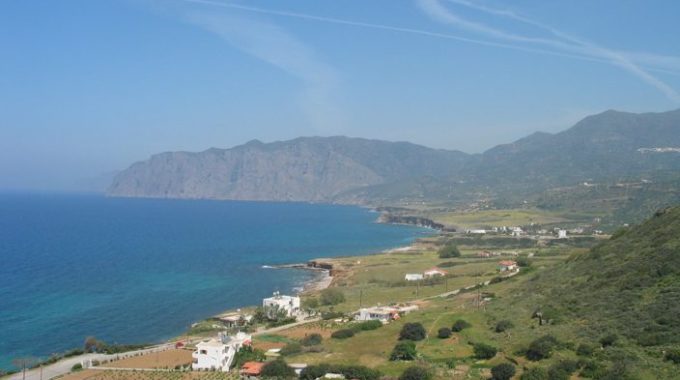
Mochlos Village
A very quiet and friendly village, Mochlos welcomes travelers from all parts of the world. There are a few restaurants and cafés but no great buildings or attractions that have an entrance fee. Mochlos is a traditional village with a population of 100 people, located 48km east of Agios Nikolaos and 35km west of Siteia. The village retains the traditional elements of Crete intact and is an ideal destination for a relaxing holiday. The villagers, mostly originating from the village Sfaka, are very friendly and welcoming to all visitors.
Mochlos is one of the few villages on Crete where visitors can eat on the seafront without being disturbed by motor traffic. Actually, there is a little road running along the sea which the inn-keepers use as an extension to their terraces.
If you come to Mochlos, it is worth visiting the nearby villages Sfaka, Lastros, Tourloti and Myrsini. The villages retain their traditional style and are home to some very old chapels. Moreover, on a hill south of Mochlos, one can visit the picturesque chapel of Holy Spirit (Agio Pneuma in Greek) which has panoramic views to Mirabello Gulf. Lastly, near the village of Myrsini one can find the Venetian Tower of Kornaros with the chapel of St. Anthony.
Mochlos: The beaches, Archaeology and the area
The village has one small sandy beach situated beneath the tavernas and a slightly longer non-sandy beach a few hundred meters to the west. The bays around Mochlos are mainly rocky and good for snorkelling. You can also easily swim to the island, but swimmers are encouraged to wear sandals since the rocks might be sharp.
If you want to stay isolated, you can also choose the sandy beach of Limenaria, located 400m west of Mochlos. There is the local harbor and the beach is well protected from the waves. In 1986 archaeologists discovered in Limenaria a Post-Minoan cemetery with several unlooted carved tombs.
There are many hotels available on Mochlos. They can be booked on any travel site. Some are closed during the off-season
The ancient settlement of Mochlos is located on an island 250 meters from the town of Mochlos. Good swimmers can reach the island in about five or ten minutes. Ask for advice on swimming across and do not try to swim around the island without a partner. If a small motorboat is attached to the dock, marked “Mochlos Boat Tours”, you may ask the owner to take you over and back for a fee. If you do not see the owner, go to the Kochilia tavern and ask them to call Tzanetos.
The island is uninhabited and there is no fee to walk around. Once there, visitors will see a very small deserted church and plenty of ruins to enjoy. There are a few signs around the island to indicate the function of various areas. Visitors can acquaint themselves with various elements of the Mochlos settlement by visiting other pages of this website.
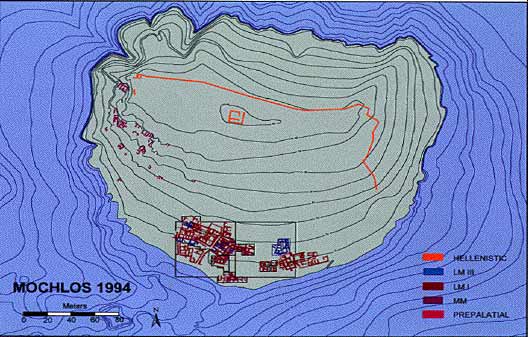
Aside from the most prominent and visible parts of the island ruins, one can scamper to the top and find the remains of a Hellenistic fortress. Also one can climb to the west and up to see an impressive number of Prepalatial tombs. The boat can also take you to see some caves on the west side of the island. Do not jump off the top of the island; there are some very sharp rocks below.
The Mochlos island used to be connected to the mainland by a land bridge which has since washed away. It is still visible from aerial photographs. Part of the settlement lies under the modern town and is not excavated. On the town side of the strait is a Mycenaean cemetery where many impressive tomb objects were found.
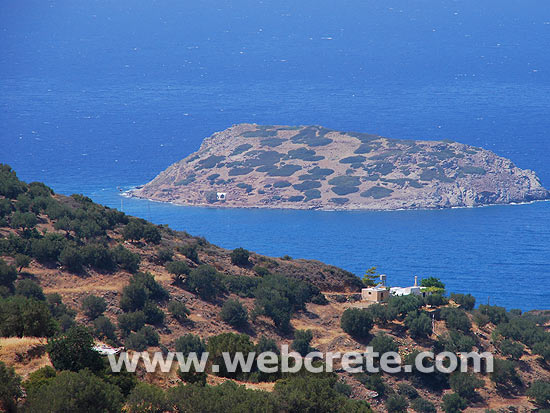
The island was first excavated in 1908 by the American Richard Seager, who found a prepalatial cemetery on the western end of the island. He uncovered 20 built tombs, pithos burials and pit graves. On the Western tip of the island, he discovered two large tombs which he considered were used for the burial of members of the ruling elite. This view was based on the size of the tombs, the wealth of the grave goods and the fact that they had been constructed some distance from the other tombs.
Most of the tombs were built in the Early Minoan II period (2900-2300 BCE) and used at least until EM III (2300-1900 BCE) while a few seem to have been used during Middle Minoan IA (2000-1700 BCE). Then they were abandoned, but brought back into use during the Neopalatial period. It wasn’t until the 1970s, however, that Professor Jeffrey Soles drew detailed plans of the cemetery and identified all the tombs. (The cemetery is described in more detail on the third page dedicated to Mochlos. Follow the link at the top of this page).
Meanwhile other archaelogists also excavated on the island and in the coastal plain opposite in the decades which followed with the result that about twenty-five sites, representing the whole Bronze Age from Early Minoan I (3500-2900 BCE) to Late Minoan IIIC (1350-1100 BCE) as well as later periods, have been reported. In 1989 Soles and Davaras began the most thorough cleaning and excavating of the cemetery and the neopalatial settlement on Mochlos ever to take place. This work continues today.
The connection with mainland
In the Late Bronze Age, the island of Mochlos and the promontory of the modern fishing village were still connected. Mochlos lies in a tectonic valley or graben, flanked by mountain blocks or horsts, with one fault line lying just along the western side of the island and another lying at the eastern end of the Mochlos plain. Extension of the earth’s crust is accommodated near the surface by faulting, and when this occurs, the area between the two faults drops down with respect to the areas on either side. Mochlos is sinking, sporadically, but sometimes quite sharply.
Since 1952 when the elevation of a Late Hellenistic fish tank along the coast was measured by J. Leatham and S. Hood, it has sunk nearly 1 m. Since the 1st century BC when the tank was functioning, it has sunk nearly 2 m. A reverse of the 2 m. subsidence would make a connection between the island and Crete, and this land bridge would have been in place through the Bronze Age and down through the Hellenistic period. Its innundation sometime after the 1st century probably accounts for the abandonment of the site.
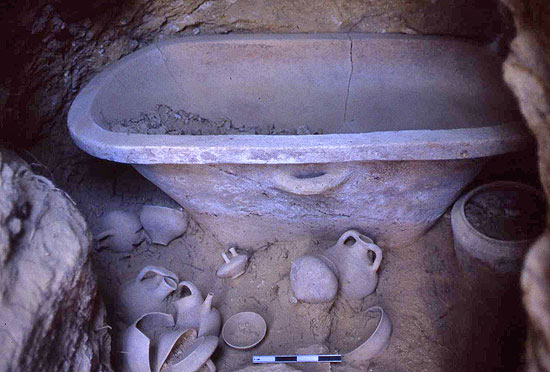
On the mainland three rooms are all that remain visible from two or three artisans’ houses that once stood near the shore south west of the modern village. Large parts of the houses were buried beneath the modern dirt track which goes from Mochlos to its harbour and after the excavation of the buildings they were backfilled to enable the track to be restored to full use again.
This is one of the largest and most significant of the surviving Early Minoan cemeteries in Crete. Excavators have uncovered more constructed tombs here than at any other cemetery of any period. During the original excavations in 1908, Richard Seager discovered more than 20 built tombs on the island. Pit graves, rock shelters and burials in pithos jars were also found.
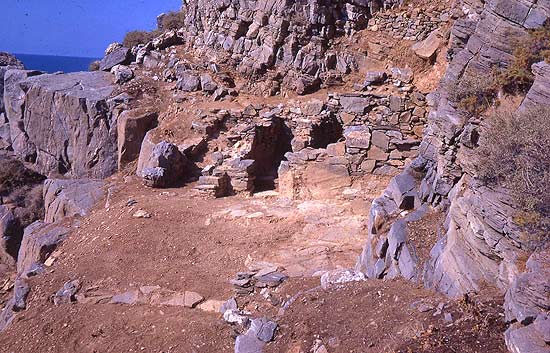
The tombs are to be found in two separate areas. On the western side of the island there is a terrace with several monumental tombs, presumably those of the local rulers. To the south, running along the contours of the hill were found a large number of more basic tombs, presumably for the ordinary people of the settlement.
The house tombs date from the Early Minoan II 2900-2300 BCE phase and continued to be used in Early Minoan III 2300-1900 BCE. Some were even used in the following Middle Minoan IA phase 2000-1700 BCE, when they subsequently all went out of use. In the Neopalatial (Second Palace) period, some of the tombs were brought back into service and the use of pithos burials became common.
As a result of cleaning operations on the site in the 1970s 28 excavated tombs were located. Many more have come to light in the intervening years.
At the east of the coastal plain, where a river runs down a ravine, past a promontory, an Late Minoan IB 1500-1450 BCE building with seven or eight rooms was discovered in the early 1990s. It was a long rectangular structure, overlooking the ravine from the promontory and part of the western facade of the building had in fact collapsed into the ravine in the distant past.
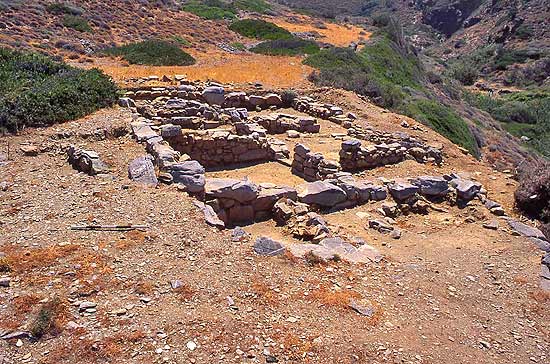
The building seems to have played quite an important role in the local economy. Evidence of terracing in a nearby field was uncovered. Pithoi had been used to store agricultural produce and vases made of locally available green serpentinite all point to a building whose occupants were engaged in various activities and who were part of the wider economy of the main settlement on Mochlos.
There was clear evidence that the building had been reoccupied in Late Minoan III 1450-1350 BCE.
As a result of cleaning operations on the site in the 1970s 28 excavated tombs were located. Many more have come to light in the intervening years.
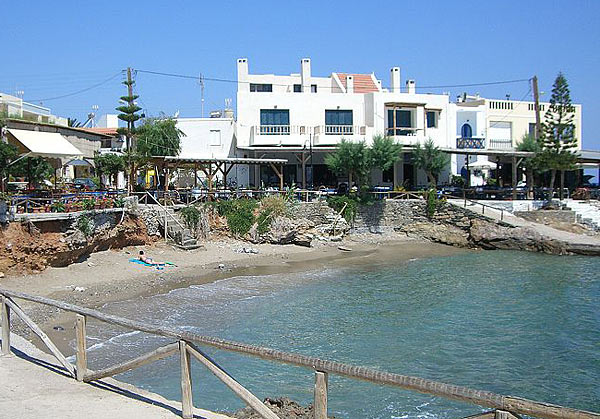
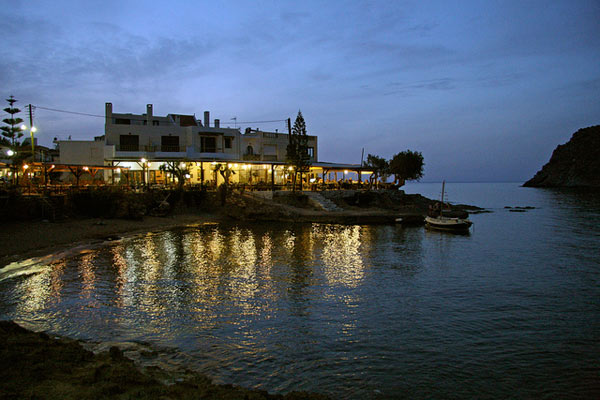
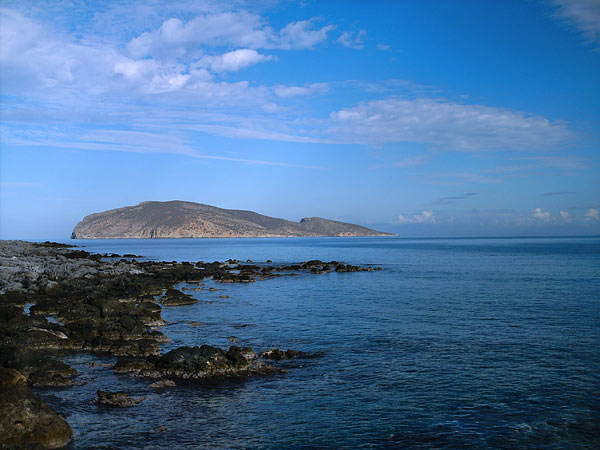
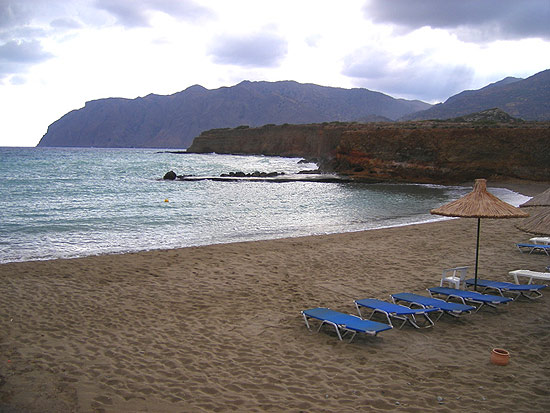
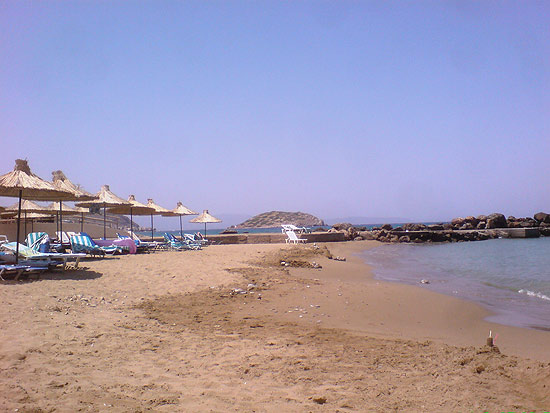
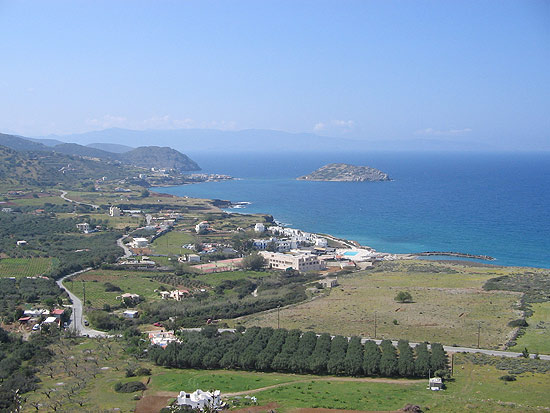
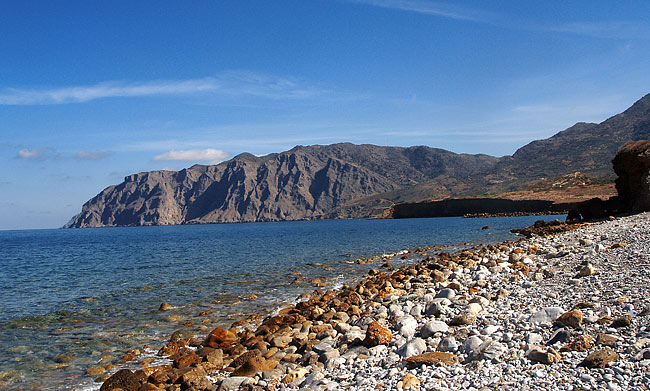
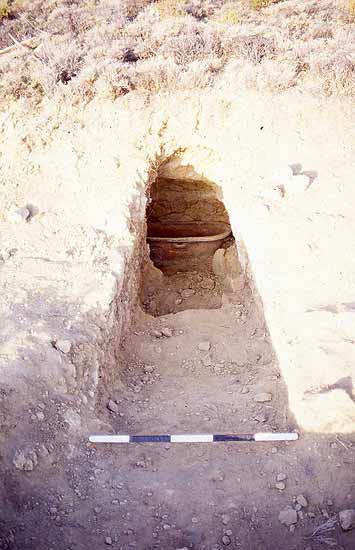
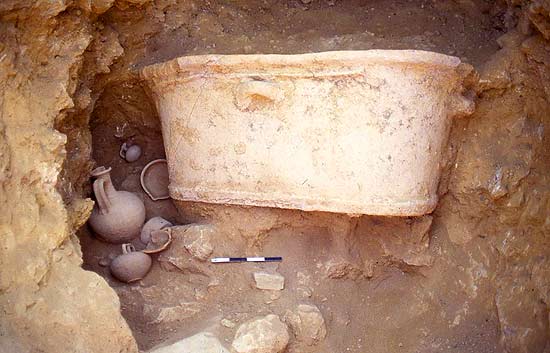
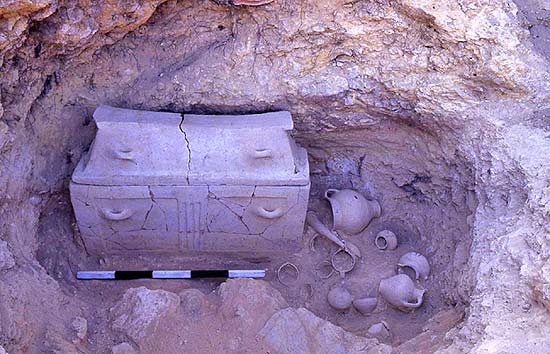
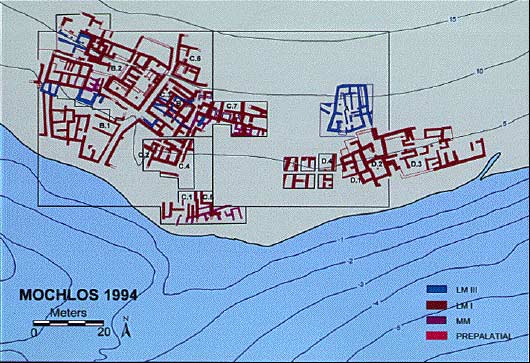
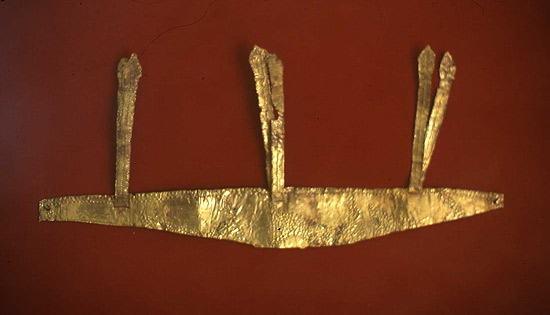
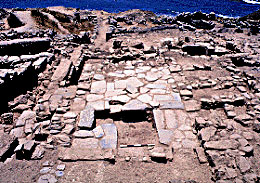
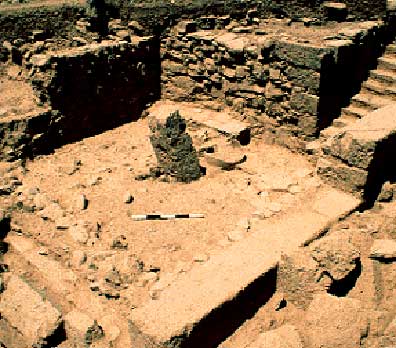
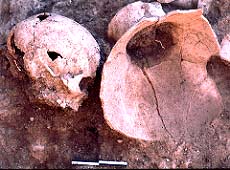
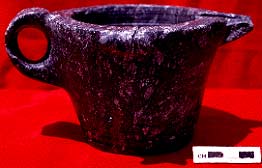
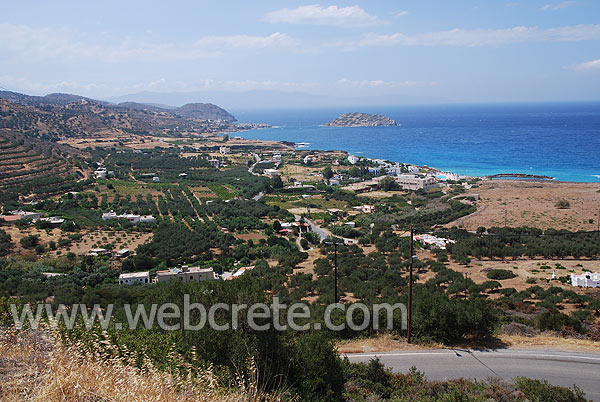
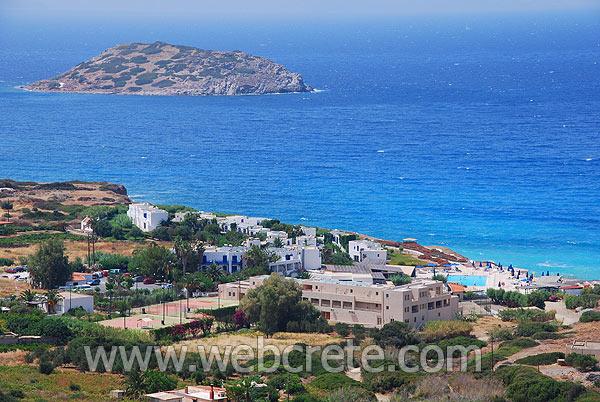
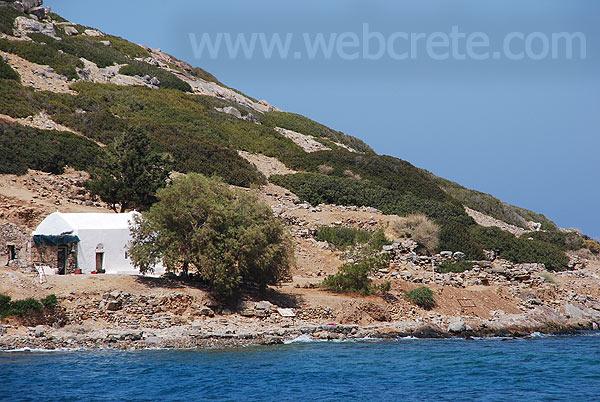
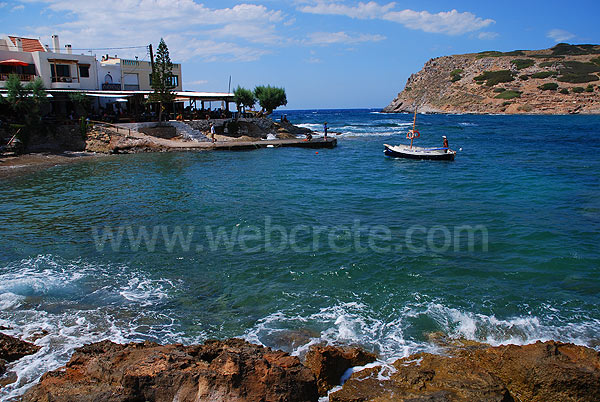
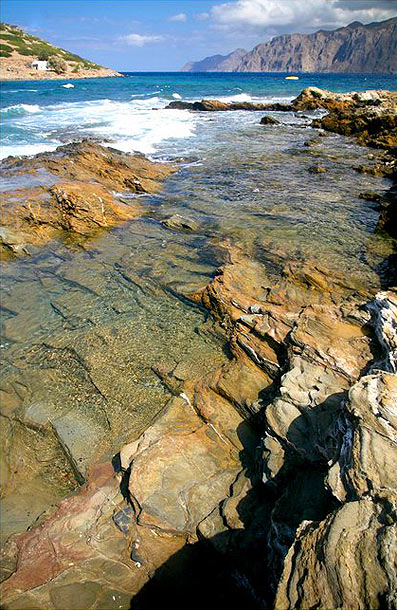
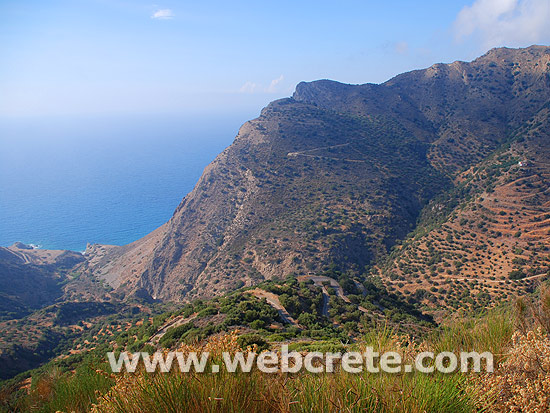
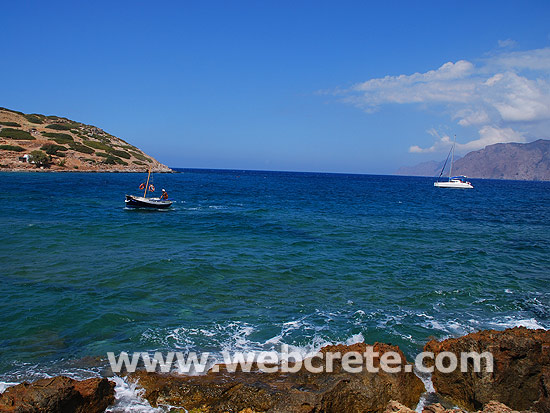
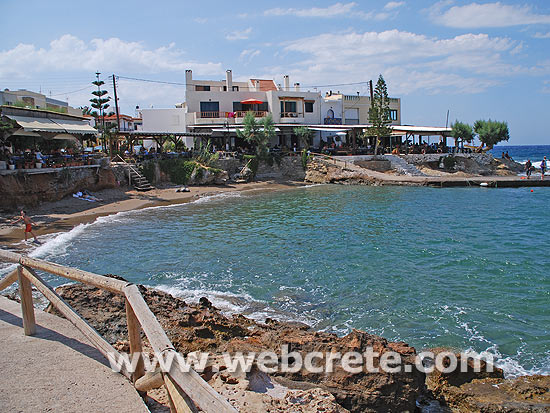
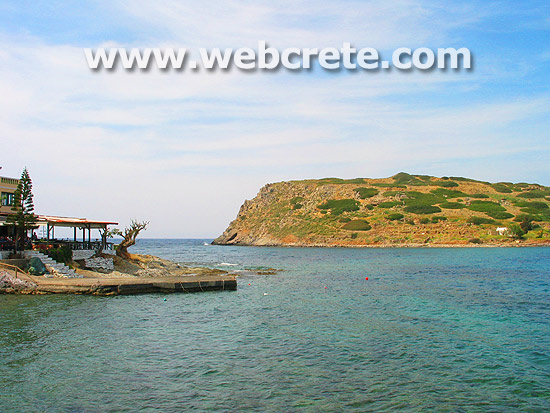
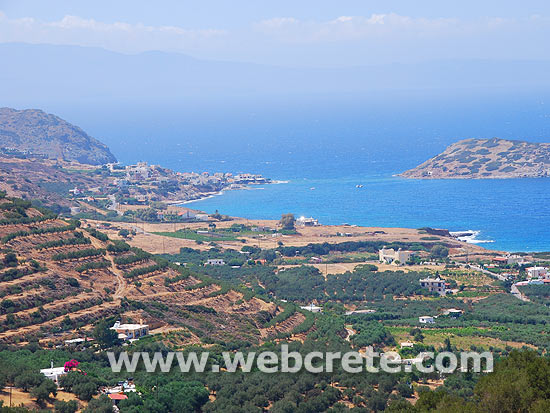
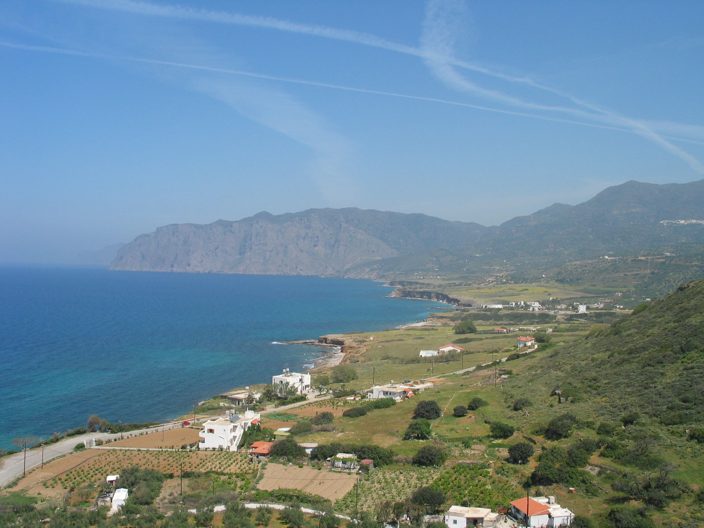
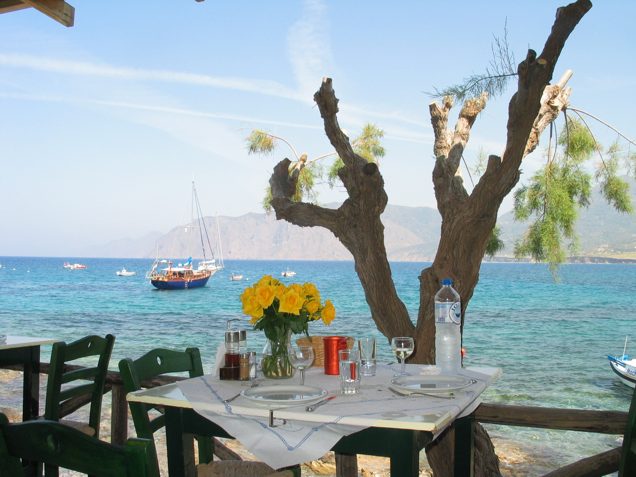
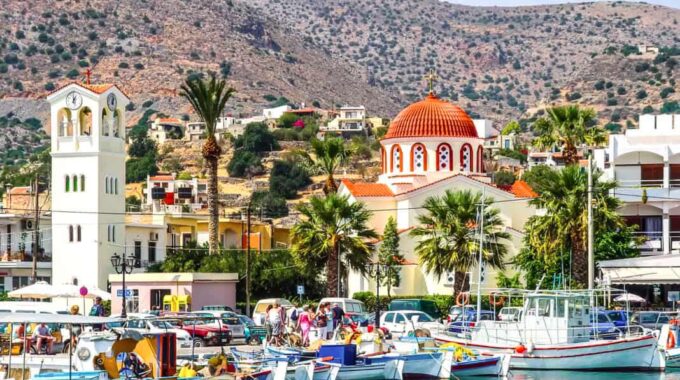
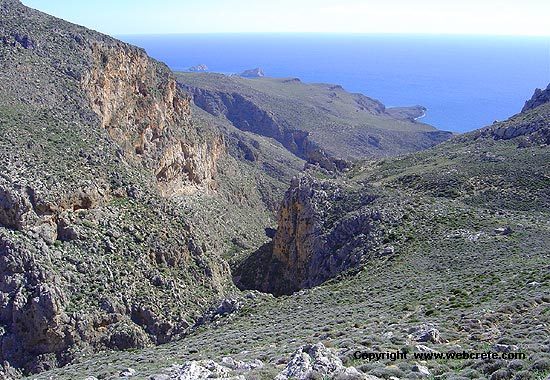
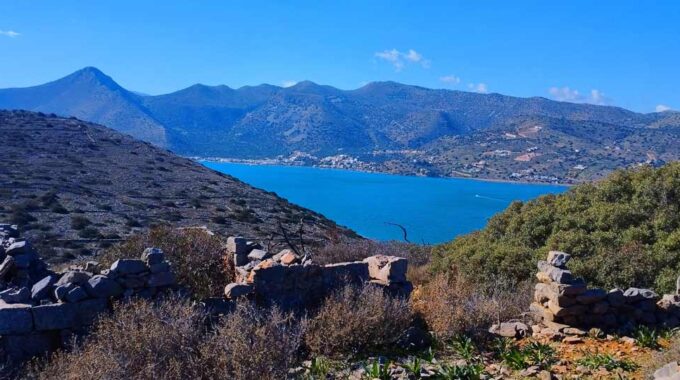
This Post Has 0 Comments